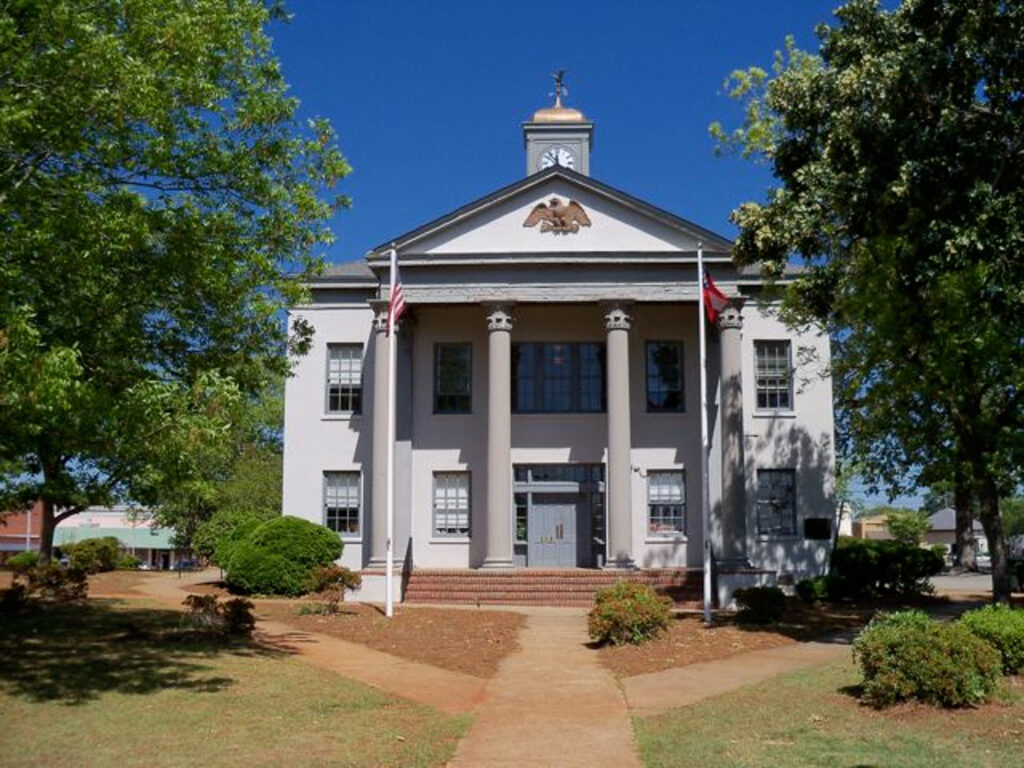Marion County, in west central Georgia, was established by an act of the state legislature in 1827, two years after the Creek Indians signed the Treaty of Indian Springs (1825). Marion, the state’s seventy-second county, was created from a large tract of land ceded from Lee and Muscogee counties, both established in 1826.
Named for the Revolutionary War (1775-83) hero General Francis “Swamp Fox” Marion of South Carolina, Marion County originally contained almost all the land that now makes up Schley and Chattahoochee counties and part of Macon and Taylor counties.
A committee of nine local citizens designated the town of Horry as the county seat, but Horry eventually lost the distinction to the township of Tazewell, in 1838. After years of political intrigue, the county seat was wrested from Tazewell and bestowed on Pea Ridge in 1849. Local residents felt that the name Pea Ridge did not elicit the respect befitting its new standing and decided to change its name to Buena Vista, in honor of U.S. president Zachary Taylor’s recent victory in the Mexican War (1846-48).

Many of the earliest white settlers of the county were enticed by the combination of the 1827 land lottery and the rich soil that yielded profitable cotton crops. Marion County would see its greatest growth during the 1840s and 1850s. By 1850 the population climaxed at 10,280, of which 3,604 were enslaved. Although ready market access by river or railway was nonexistent, the county’s farms prospered by sending their commodities westward thirty-three miles to Columbus.
The end of the Civil War (1861-65) was a period of adjustment for Marion County. Reconstruction involved the reordering of political, social, and economic life, which led to fundamental changes in agriculture. Finding itself economically surpassed by more diversified counties, Marion tried to modernize by completing the Buena Vista and Ellaville Railroad in 1884. The county’s vision of a “New South” was never realized, however. Heavily dependent upon agriculture, the county suffered through bank panics, the boll weevil crisis, and the Great Depression, and many residents were forced to start life anew in other, more urban locales.
One such emigre was Mark Gibson, the father of legendary Negro League baseball player Josh Gibson (1911-47). Josh Gibson, known as the “Black Babe Ruth,” was born in Buena Vista and attended public schools there until his family relocated to Pittsburgh in search of stable employment during the 1920s. Though Gibson’s talent blossomed in Pittsburgh, its seeds were sown on the farmlands of Buena Vista.
Another was Eddie Owens Martin. Like the Gibsons, Martin fled Georgia in the 1920s, forsaking life as a sharecropper for greater prospects in the North. During the 1950s Martin adopted the name St. EOM and returned to Buena Vista to live on his inherited property. Martin transformed his estate into a Zen-like environment that he called Pasaquan. By using religious and archetypal symbols reflecting influences from Africa, Asia, South America, and Easter Island, St. EOM created a mystic and artistic world in which he brought the past and future together. Pasaquan has been called one of the most important folk art centers in America.

According to the 2020 census, the population of Marion County was 7,498.








